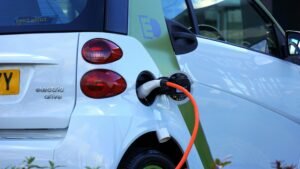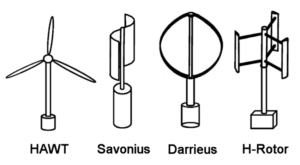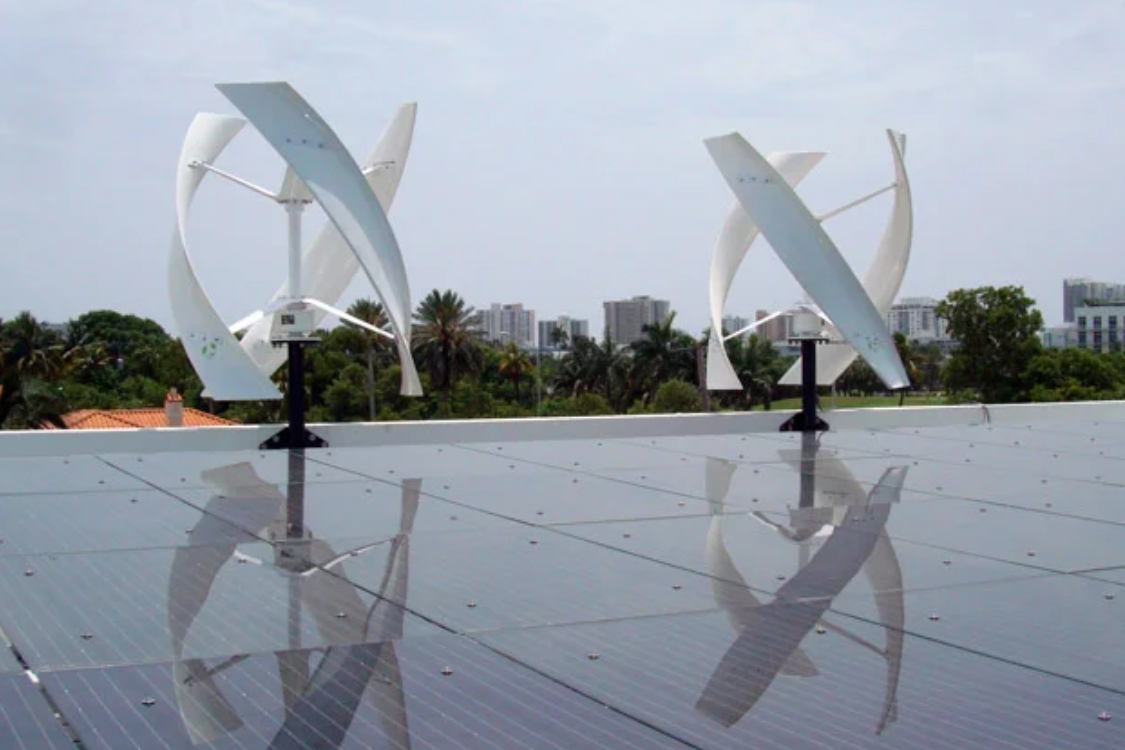The use of small wind turbines, sometimes referred to as micro wind turbines, as a substitute renewable energy source is growing in favour.
For homes, farms, and small companies, these devices can transform wind energy into electricity, offering a sustainable and clean power source.
Although the market for small wind turbines has been dominated by horizontal-axis wind turbines for decades, the introduction of vertical-axis designs has brought about an advancement in the field. This blog article will explore the world of small wind power and the turbines with their various designs, benefits, and uses. Let’s first clarify what little wind turbines actually are. These are usually characterised as turbines with a rated capacity of less than 100 kW, which is the highest power a turbine can generate in a given set of circumstances.They are designed to operate in low to moderate wind speed conditions, making them ideal for residential and small-scale applications. Unlike their larger counterparts, small wind turbines have a much smaller rotor diameter, ranging from a few metres to 20 metres.
This makes them suitable for areas with limited space where traditional wind turbines may not be feasible. One of the key advantages of small wind turbines is their ability to harness wind energy in various locations. Unlike solar panels, which require a certain amount of sunlight to operate efficiently, wind turbines can generate electricity even on cloudy days.
This makes them an attractive option for off-grid systems, providing a reliable source of power in remote or rural areas. In addition, small wind turbines come in a variety of designs, giving users the flexibility to choose the most suitable one for their location and energy needs.
The most common type of small wind turbine is the horizontal-axis design, which resembles the large turbines often seen on wind farms. They have three blades that rotate on a horizontal axis, facing in the direction of the wind. These turbines are effective in locations with consistent and strong winds, making them a popular choice in coastal regions. However, their large size and noise levels may make them unsuitable for residential areas.
On the other hand, vertical-axis small wind turbines have a smaller footprint and can operate at lower wind speeds, making them ideal for urban and suburban settings. These turbines have a different design, with blades that rotate on a vertical axis, similar to an egg beater.
The vertical orientation of the blades allows them to capture wind from any direction, making them more efficient in areas with turbulent or variable winds.
Additionally, these turbines are quieter and require less maintenance compared to their horizontal-axis counterparts.
One example of a vertical-axis small wind turbine is the Darrieus rotor, also known as the “egg beater” design. This turbine has curved blades that resemble the shape of an aeroplane wing, allowing it to capture more wind energy.
In contrast, the Savonius rotor is another popular vertical-axis design with a more simple and rugged construction. It has a distinctive “S” shape, making it efficient in low wind speeds and turbulent conditions.



Both of these designs have been proven to be successful in small-scale wind energy generation. So why choose small wind turbines over other renewable energy options? Firstly, small wind turbines have a relatively short payback period, generally between 5 and 15 years, depending on the location and energy production.
This means that after the initial investment, the system will pay for itself and provide free electricity for years to come. In addition, small wind turbines have a long lifespan of around 20 to 25 years, making them a cost-effective solution in the long run.
Moreover, small wind turbines have a minimal environmental impact. Unlike traditional power plants that rely on fossil fuels, wind turbines do not produce harmful emissions or contribute to climate change. They also have a low noise level, making them a suitable option for residential areas.
It should be noted that small wind turbines can help individuals and communities reduce their carbon footprint and promote clean energy solutions. For urban residents, vertical, noiseless wind turbines are significant because they offer a cost-effective and sustainable energy source. These turbines are smaller in size, silent when in operation, and have a sleek modern appearance that blends in perfectly with urban settings.
Because they use turbulent winds to generate energy more reliably and need little upkeep, they are a practical and affordable choice for residences. Therefore, the use of wind poweris becoming increasingly popular among homeowners looking to reduce their reliance on traditional energy sources.
.
References
Energy, E. C. (2023, December 6). Silent and Efficient Vertical Axis Wind Turbines for Residential . . . Energy5. Retrieved February 20, 2024, from https://energy5.com/silent-and-efficient-vertical-axis-wind-turbines-for-residential-areas
The Possibilities and the Future of Vertical-axis Wind . . . (2020, December 3). Oy Windside Production Ltd | A manufacturer of robust and reliable vertical axis wind turbines since 1982. Retrieved February 20, 2024, from https://windside.com/media-links/the-possibilities-and-the-future-of-vertical-axis-wind-turbines-in-urban-setting/


